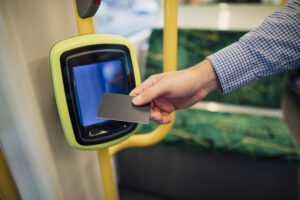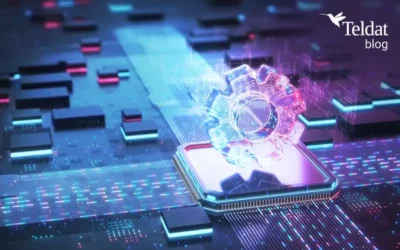 Payment Credit cards are now used world over and are more popular than ever. In Spain, for example, there are almost 50,000,000 cards in use (of different types). The latest generation of cards comes with Brand new technological components that increase security and help simplify operations.
Payment Credit cards are now used world over and are more popular than ever. In Spain, for example, there are almost 50,000,000 cards in use (of different types). The latest generation of cards comes with Brand new technological components that increase security and help simplify operations.
The technologies used in paymentcredit cards have come a long way in the last few years. Magnetic bands (where information used to be stored) have been gradually replaced by microchips. These establish bidirectional communications with a PoS terminal to identify the customer and authorize payment. The recently adopted contactless technology opens a communications channel through card proximity that speeds up customer authentication and payment.
What can contactless technology bring to public transport?
The advantages contactless cards are many, primarily that it can be used on all means of transport:
- Pay directly onboard or at turnstiles: avoid queues to purchase the various tickets, passes, etc., at the ticket office (or dispensers). Furthermore, your contactless card serves both as a payment method and a transport pass.
- System access time is reduced: advanced countless technology takes 500 milliseconds, as opposed to the 5-8 seconds needed when using QR codes or the average 30 seconds spent when paying in cash.
- Ease of access and reduction of wait time: as a result of the above two points related to contactless technology, queues in access points or turnstiles can dramatically decrease.
- Reduction of operating costs: payment through contactless cards means operators no longer need to issue tickets, your card becomes your ticket.
- User identity: the use of nominal contactless cards provides operators with valuable user information, such as passenger behavior, frequency of use, nationality etc. Moreover, since the contactless card can be used as a payment method and a means to identify the passenger, it can act as a multimode transport document.
- Durability: physically, these contactless payment cards are far more resistant, with a lifespan of two to four years as opposed to magnetic tickets, which bend, demagnetize or simply wear out.
- Security: security standards for contactless payment cards are the most stringent in the market, making this one of the safest ways to pay.
- Universality: contactless cards can be used worldwide.
Contactless card payment and access solutions
To launch payment solutions via contactless technology, specific hardware needs to be installed at access points to establish connections between contactless payment cards and financial systems. In addition, the importance of installing devices that can provide real-time communications in vehicles such as buses, trains, trams, etc. cannot be stressed enough. On top of withstanding high temperatures and vibrations (a frequent occurrence onboard), these contactless devices must guarantee maximum security between onboard terminals and centrals. Given the criticality and important nature of the data being sent when using contactless payment cards, devices are equipped with technologies such as IPSec, and other tunneling protocols, redundancy – VRRP – Virtual Router Redundancy Protocol – and guaranteed coverage through dual LTE and dual SIM.
In order to meet the aforementioned requirements, the devices that are able to provide connectivity to the vehicles, must be multiservice communication platforms especially designed for onboard vehicle and railroad installation. They must be able to provide connectivity throughout the entire route, whilst guaranteeing maximum data safety. This way, by installing these two types of devices, public transport companies can rest assured and be confident of the success of innovate solutions such as the use of contactless cards as means of payment.
Teldat’s transport solutions, H2-Automotive+ and H2-Rail, together with their specialized mobility software, make up an important part of the contactless solution.


























